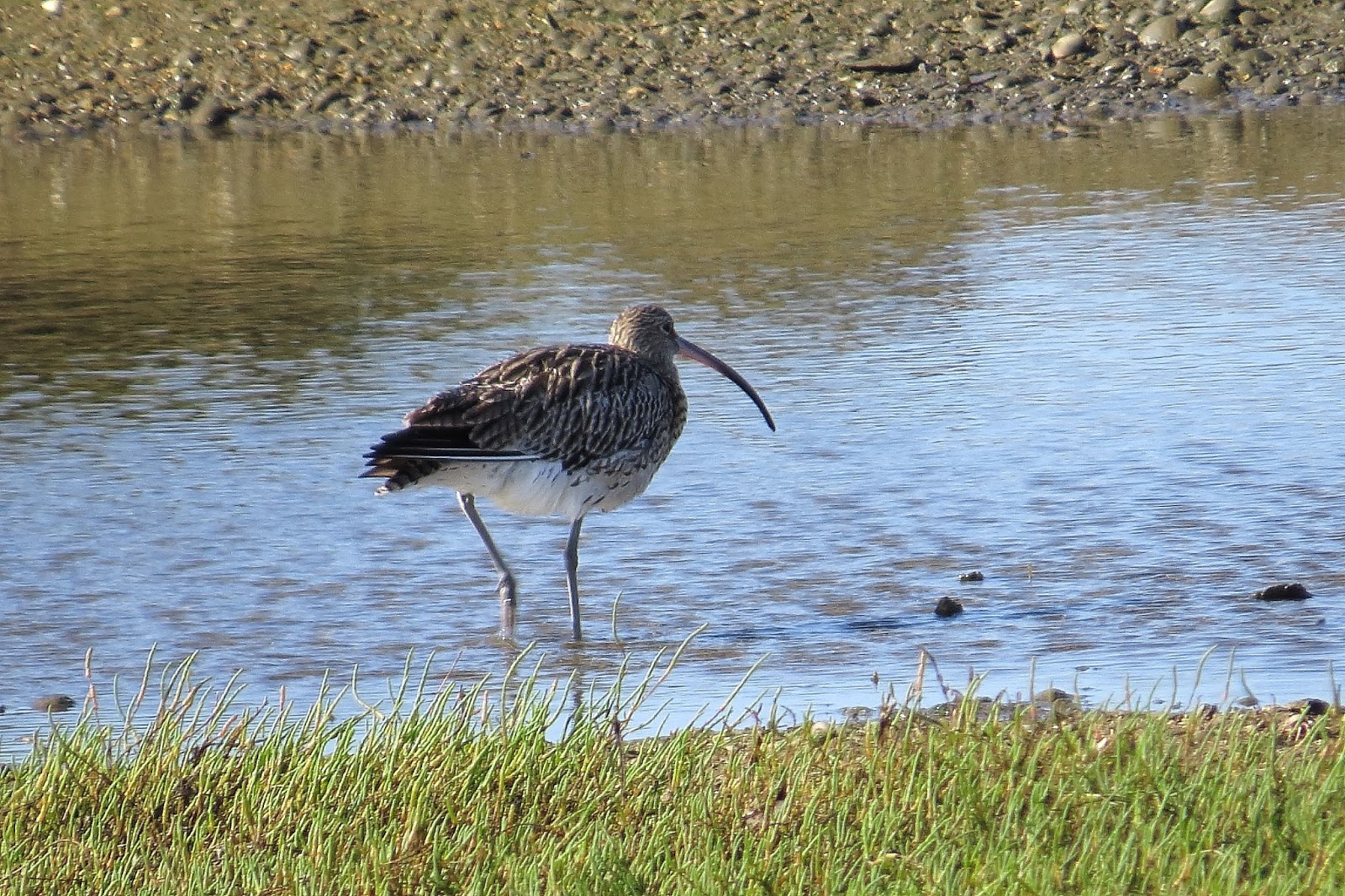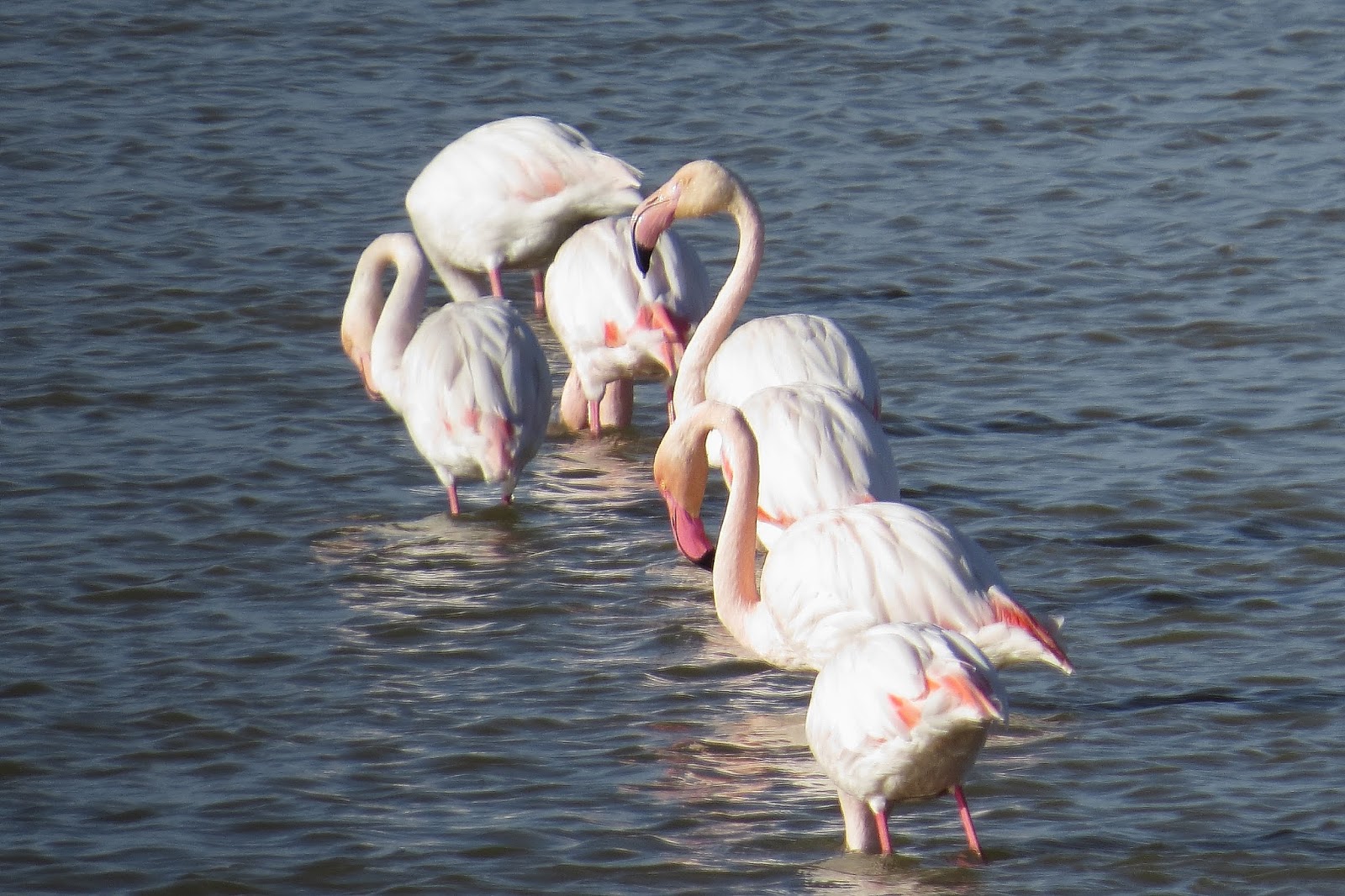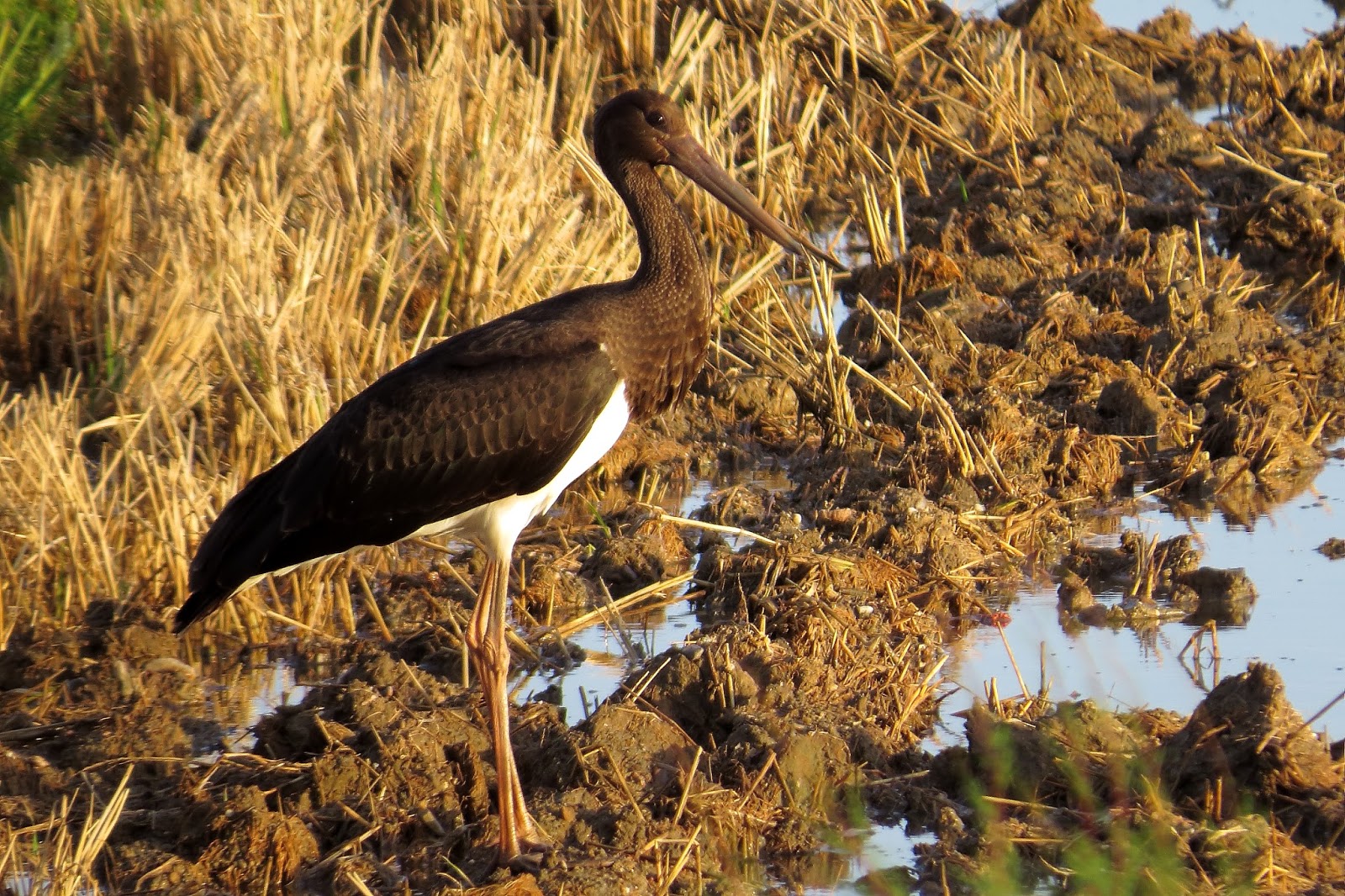Hola a todos una vez más.
Hi all again.
Esta vez os voy a mostrar algunas de las aves que vimos en un viaje de 5 días por la costa Andaluza en noviembre.
This time I'll show you some of the birds we saw a 5 day trip by the Andalusian coast in November.
En esta primera entrada se trata de la Desembocadura del Río Odiel en Huelva y La Dehesa de abajo en La Puebla del Río, Sevilla.
This first post is about the Desembocadura del Río Odiel at Huelva and La Dehesa de Abajo at La Puebla del Río, Seville.
La noche anterior estuvo diluviando pero al final durante el día nos hizo algo de sol y un atardecer muy soleado.
The night before was heavy rains but at the end during the day made us some sun and a very sunny afternoon.
DESEMBOCADURA DEL RIO ODIEL:
DESEMBOCADURA DEL RIO ODIEL:
Una aguja colinegra (Limosa
limosa).
A Black-tailed
Godwit.
Vuelvepiedras común (Arenaria
interpres).
Turnstone.
Flamencos comunes (Phoenicopterus
ruber).
Greater
Flamingos.
Una pésima foto de un Pechiazul (Luscinia
svecica) pero he decidido ponerla pues los veo tan pocas veces que me pareció interesante subirla.
A bad photo of a Bluethroat but I decided to put it as I see them so rarely and I found interesting to show it.
Un grupo de cigüeñuelas comunes (Himantopus
himantopus) con unos correlimos zarapitines (Calidris
ferruginea).
A group of Black-winged Stilts with some Curlew Sandpipers.
Esta águila pescadora (Pandion
haliaetus) nos hizo un buen picado y consiguió capturar una lisa muy grande que casi no podía con ella. Yo dejé la cámara y disfruté del lance.
This osprey made a good dive and managed to capture a very large Gray Mullet that almost couldn't with it. I left the camera and enjoyed the moment.
Había muchos chorlitos grises (Pluvialis
squatarola).
There were many Gray Plovers.
Y lo mismo ocurría con los zarapitos reales (Numenius arquata).
And the same happened with the Eurasian Curlews.
Pero había muy pocos zarapitos trinadores (Numenius
phaeopus).
But there were very few Whimbrels.
Los ostreros euroasiaticos (Haematopus ostralegus) estaban muy confiados.
The Eurasian oystercatchers were very tame.
También había alguna aguja colipinta (Limosa lapponica).
There was also some Bar-tailed Godwit.
Garza real (Ardea
cinerea).
Grey
Heron.
Otra más.
Another one.
Un grupo de charranes patinegros (Thalasseus
sandvicensis) junto con unos fumareles comunes (Chlidonias
niger), los más pequeños. Algunos estaban anillados.
A group of Sandwich
Terns together with some Black
Terns, smaller. Some were ringed.
Archibebe claro (Tringa
nebularia).
Greenshank.
Y más ostreros euroasiáticos (Haematopus ostralegus) en esta ocasión con un archibebe común (Tringa
totanus).
And more Eurasian oystercatchers on this occasion with a Common Redshank.
Una garceta común (Egretta
garzetta).
A Little
Egret.
Archibebe claro (Tringa nebularia).
Greenshank.
Correlimos zarapitines (Calidris ferruginea).
Curlew
Sandpipers.
Espátula común (Platalea
leucorodia).
Eurasian Spoonbill.
Un bonito Archibebe común (Tringa totanus) también anillado.
A beautiful Common Redshank also ringed.
Una cerceta común (Anas
crecca).
A Common
Teal.
Y una cigueñüela común (Himantopus
himantopus).
And a Black-winged
Stilt.
DEHESA DE ABAJO LA PUEBLA DEL RÍO, SEVILLA:
DEHESA DE ABAJO LA PUEBLA DEL RIO, SEVILLE:
En el camino a Dehesa de abajo nos encontramos con esta bonita cigüeña negra (Ciconia
nigra). Tenia una anilla con el número 1M86.
On the way to Dehesa de Abajo we find this pretty Black Stork. It carried a ring number 1M86.
Una avefría europea (Vanellus
vanellus).
A Northern
Lapwing.
En la Laguna había algunos flamencos comunes (Phoenicopterus
ruber).
In the lagoon there were some Greater Flamingos.
La especie más abundante eran las cucharas comunes (Anas
clypeata). En la foto y en primer plano un grupo de patos colorados (Netta
rufina).
The most abundant specie was the Northern Shovelers. In the photo and in the foreground ther was a group of Red-crested Pochards.
Impresionante la cantidad de aves que había.
Amazing how many birds there were.
Solo para los que tengan paciencia en esta foto se ve un macho de ánade rabudo (Anas
acuta).
Only for those who have patience in this photo is a male Pintail.
Al fondo en el agua un numeroso bando de avocetas comunes (Recurvirostra
avosetta) y detrás, en la orilla, otro de cigüeñuelas comunes (Himantopus
himantopus).
At the bottom in the water a large flock of Avocets and behind on the shore, another of Black-winged
Stilts.
También se veían algunas cercetas pardillas (Marmaronetta
angustirostris). En la foto se pueden apreciar 6. Tambien vimos porrones pardos (Aythya
nyroca), cercetas comunes (Anas
crecca), ánades frisos (Anas
strepera), ánades reales (Anas
platyrhynchos) y silbones europeos (Anas
penelope).
Some Marbled ducks were also seen. In the photo you can see 6. We also saw Ferruginous
Ducks, Common
Teals, Gadwalls, Mallards and Eurasian
Wigeons.
Un bisbita pratense (Anthus
pratensis).
A Meadow
Pipit
Creo que sobran las palabras.
I think words are unnecessary.
Y ya cuando nos íbamos a nuestro destino siguiente pudimos disfrutar de este joven de cigüeña negra (Ciconia nigra).
And when we went to our next destination we could enjoy this young of Black Stork.
Hasta la próxima entrada.
Until the next post.

































































